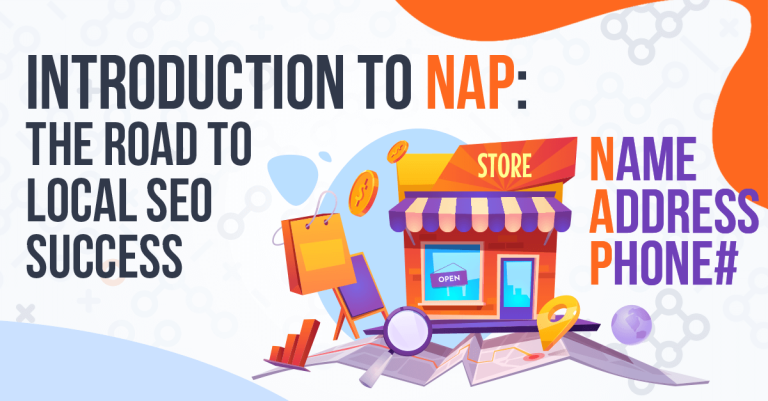Indigenous Labour Hire in Australia: Opportunities and Challenges
Australia, the land Down Under, boasts not only breathtaking landscapes but also a rich cultural tapestry. Within this tapestry lies a crucial thread – Indigenous labour. In this blog post, we unravel the opportunities and challenges surrounding Indigenous labour hire in the country, shedding light on a topic that deserves more attention than it often receives.
Overview of Indigenous Labour Hire in Australia
Ah, Indigenous labour – a term that goes beyond employment statistics. It’s a bridge connecting the past, present, and future of Australia’s workforce. To comprehend the current scenario, let’s first take a stroll through the historical avenues.
Peeking into the Rearview Mirror: Australia’s history is etched with the resilience of its Indigenous people. Yet, the journey of Indigenous participation in the workforce has been a winding road, marked by both progress and persistent challenges. Over the years, initiatives have emerged to elevate Indigenous voices and opportunities.
Dialing into the Present: Presently, Indigenous labour constitutes a significant part of Australia’s workforce. The government, recognizing the need for inclusion, has rolled out various initiatives aimed at promoting Indigenous employment. These initiatives span diverse sectors, from healthcare to construction, echoing the call for a more inclusive and representative workforce.
Historical Context and Evolution
Delving into history, we find that Indigenous Australians have a longstanding connection with their lands, shaping their unique perspectives on work and community. However, historical policies and practices have often hindered rather than helped their integration into the workforce.
Fast forward to the present, and we witness a transformation – a slow but sure dismantling of barriers. Indigenous Australians are stepping into roles that not only contribute to the economy but also empower communities. It’s a testament to resilience, adaptability, and the collective will to forge a brighter future.
Current State of Indigenous Employment
The present landscape of Indigenous employment is a mosaic of progress and untapped potential. Numbers tell part of the story – the rising percentage of Indigenous individuals in the workforce is heartening. However, to truly understand the picture, one must appreciate the individual stories, triumphs, and challenges that accompany these statistics.
Beyond the employment figures, there’s a narrative of empowerment. Indigenous Australians are carving out spaces for themselves in various industries, from art and culture to science and technology. It’s not just about having a job; it’s about having a meaningful role and contributing to a diverse and vibrant Australia.
Opportunities for Indigenous Labour Hire
Now that we’ve taken a nostalgic trip and surveyed the current panorama, let’s pivot to the brighter side of the coin – the opportunities that abound for Indigenous labour in the vast expanse of the Australian workforce.
Government Initiatives
Charting the Course: The Australian government, recognizing the imperative of Indigenous inclusion, has charted a course with various initiatives. Programs like the Indigenous Procurement Policy and the Indigenous Advancement Strategy aim not only to increase Indigenous participation in the workforce but also to create a conducive environment for growth.
Success Stories in the Wake of Policy: These policies have not merely remained ink on paper. Success stories echo through the corridors of change. Indigenous individuals, armed with opportunities, have carved out niches in sectors ranging from construction to information technology. It’s a testament to what can be achieved when policies align with aspirations.
Corporate Initiatives
Corporate Symphony for Inclusion: In the corporate landscape, a symphony for inclusion is gaining volume. Companies are recognizing the value of a diverse workforce, not just as a nod to political correctness but as a strategic advantage. Indigenous employment is not charity; it’s an investment in talent and perspective.
Partnerships for Progress: Successful partnerships between corporations and Indigenous communities are becoming the norm rather than the exception. These collaborations extend beyond the hiring process, delving into skill development, mentorship, and creating workplaces that celebrate diversity. It’s a dance of collaboration that harmonizes the interests of both parties.
As we navigate the sea of opportunities, it’s crucial to acknowledge that this is not just about meeting quotas; it’s about enriching the workforce with unique perspectives and talents. Indigenous individuals bring not just their skills but a cultural wealth that can enhance the fabric of any organization.
Challenges Faced by Indigenous Labour Hire
While the opportunities paint a promising picture, no landscape is without its challenges. The road to Indigenous inclusion faces hurdles, both historical and contemporary. Let’s navigate these challenges and explore ways to pave a smoother path for the future.
Cultural Barriers
Cultural Harmony in the Workplace: The workplace is a microcosm of society, and cultural harmony is the melody that sustains it. Indigenous individuals may face challenges rooted in cultural differences, necessitating a shift in workplace dynamics. Companies that actively foster cultural sensitivity and inclusivity lay the groundwork for a harmonious work environment.
Beyond Acknowledgment: It’s not enough for companies to merely acknowledge cultural differences. Understanding and celebrating these differences create a workplace where everyone feels valued. Cultural sensitivity training, initiatives led by Indigenous employees, and a commitment to creating a culturally inclusive environment are pivotal steps toward dismantling these barriers. For more information check out Labour Hire.
Educational and Skill Gaps
Addressing the Educational Canvas: Education is the brush that paints the canvas of opportunity. Indigenous job seekers may face challenges stemming from educational gaps. Initiatives that address these gaps, such as mentorship programs, scholarships, and accessible training, can bridge the divide and create a workforce that is not just diverse but skilled and capable.
Empowering Through Skill Development: Skill development is a two-way street. Companies can actively engage in initiatives that empower Indigenous individuals through training programs tailored to industry needs. By addressing skill gaps head-on, businesses contribute not only to individual success but also to the overall growth of the workforce.
Geographical and Remote Work Challenges
Remote Horizons: Australia’s vastness presents a unique challenge – geographical and remote work barriers. Indigenous communities in regional areas may find themselves at a disadvantage when it comes to accessing employment opportunities. However, technology offers a lifeline, with remote work solutions and virtual communication tools breaking down the barriers of distance.
Innovations for Inclusion: Innovations in remote work technologies are not just conveniences for businesses; they are tools for inclusion. Companies embracing these innovations can tap into a talent pool that extends far beyond urban centers, fostering diversity and creating opportunities where there were once challenges.

Success Stories and Best Practices
Now that we’ve identified the opportunities and acknowledged the challenges, it’s time to turn the spotlight on the success stories that inspire and the best practices that pave the way for a more inclusive future.
Spotlight on Success: In every sector, there are shining examples of Indigenous individuals not just breaking the glass ceiling but shattering it. From healthcare professionals making a difference in remote communities to artists bringing Indigenous culture to the global stage, success stories abound. These individuals showcase the immense potential within Indigenous communities when given the opportunity to thrive.
Best Practices for Inclusive Workplaces: Behind these success stories lie best practices that form the foundation of inclusive workplaces. Companies committed to fostering diversity implement mentorship programs, create safe spaces for open dialogue, and actively seek out Indigenous talent. It’s not just about recruitment; it’s about creating an environment where Indigenous employees can flourish and contribute meaningfully.
Future Outlook and Trends
As we peer into the crystal ball of the Australian workforce, what does the future hold for Indigenous labour hire?
Emerging Trends: Emerging trends indicate a shift towards not just diversity but genuine inclusion. Companies are recognizing that the benefits of Indigenous employment extend beyond meeting quotas; they encompass enhanced creativity, innovation, and a broader understanding of the market.
Collaboration for Change: The future calls for collaboration – between government bodies, corporations, and Indigenous communities. It’s about creating policies that are not just well-intentioned but effective, fostering partnerships that go beyond recruitment numbers, and embracing a mindset that sees diversity and inclusion as catalysts for growth.
In wrapping up our exploration of Indigenous labour hire in Australia, the tapestry reveals both the intricate patterns of success and the challenges waiting to be unraveled. Opportunities beckon, and challenges offer avenues for growth and innovation.
The journey towards a more inclusive workforce is a collective endeavor, requiring the harmonious dance of policies, corporate initiatives, and individual commitment. As we close this chapter, let us carry the wisdom of the past, the resilience of the present, and the promise of the future into the ongoing narrative of Indigenous participation in Australia’s workforce. For more information check out: https://labourhireauthority.vic.gov.au/.
FAQs
-
Are there financial incentives for companies hiring Indigenous workers?
Yes, various government programs offer financial incentives to companies promoting Indigenous employment.
-
How can companies overcome cultural barriers in the workplace?
Companies can provide cultural sensitivity training, foster a diverse and inclusive culture, and involve Indigenous employees in decision-making processes.
-
What industries show significant opportunities for Indigenous labour hire?
Industries such as construction, mining, and hospitality have seen substantial opportunities for Indigenous labour hire.
-
How can remote work challenges be addressed for Indigenous workers in regional areas?
Implementing flexible work arrangements, providing remote work infrastructure, and utilizing virtual communication tools can help overcome remote work challenges.
-
What role can non-profit organizations play in supporting Indigenous labour hire?
Non-profit organizations can facilitate training programs, advocate for Indigenous employment, and bridge the gap between Indigenous job seekers and employers through networking and support services.







